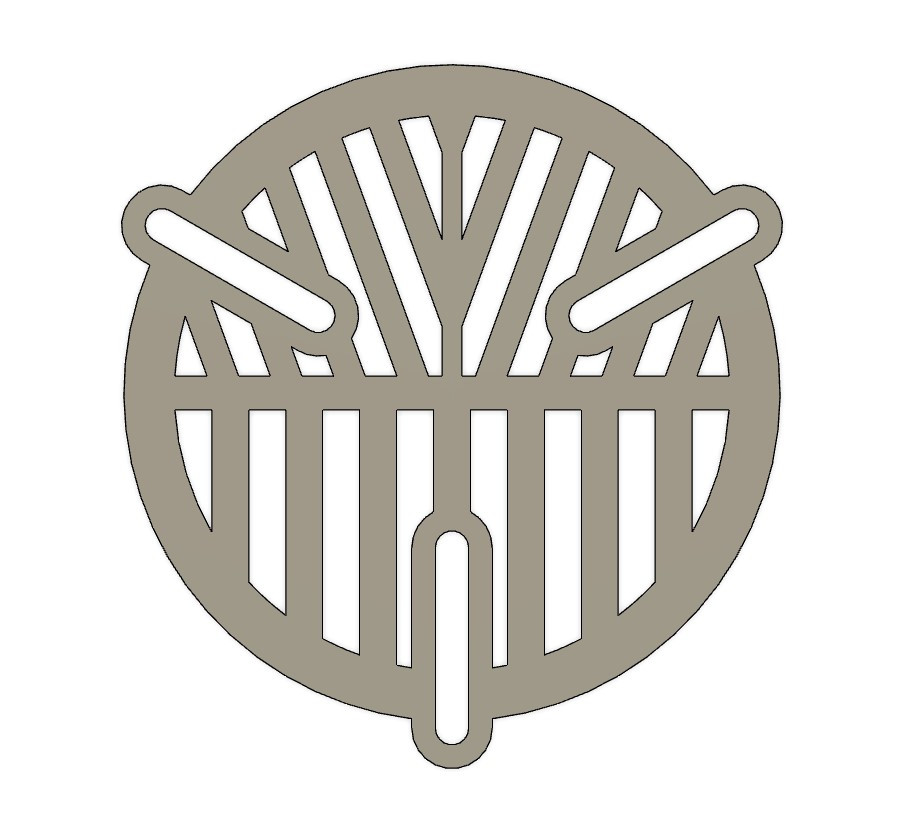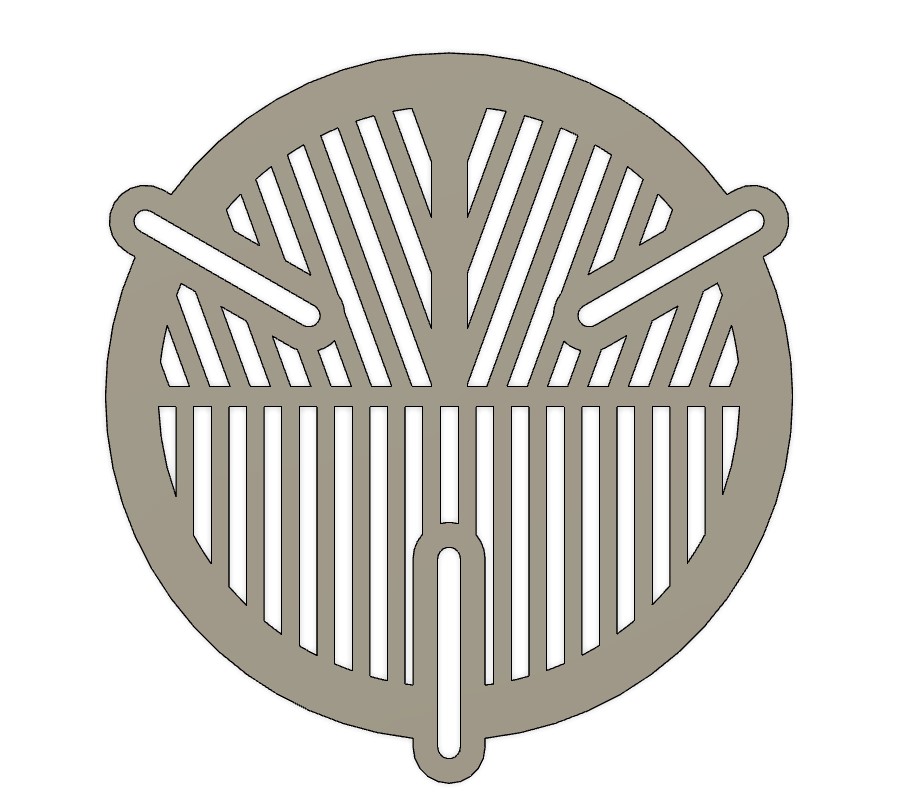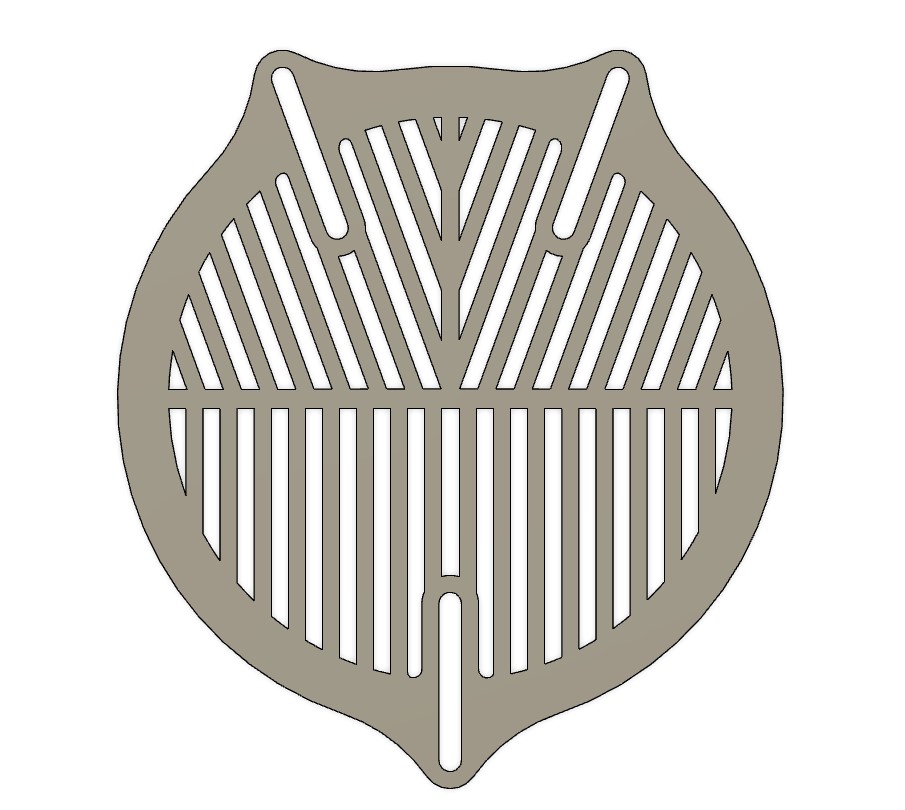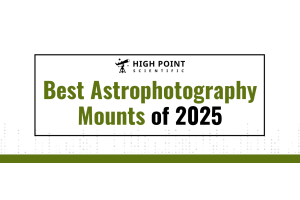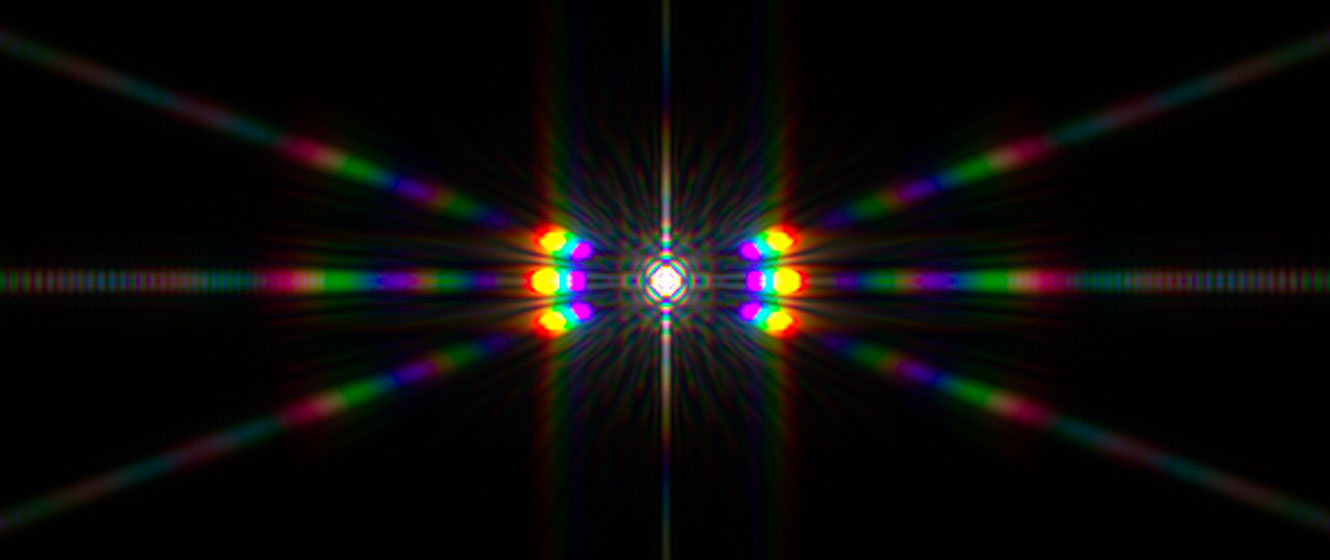
The Bright Focus Mask
Apertura is a company that seeks to provide better performance at a great price. When they turned their attention to focus masks, what they found were offerings that were of good quality but not wholly optimized, and options that came in at a budget price point but were less than ideal in terms of quality and performance. Seeing this, Apertura set out to not just bring their take on a Bahtinov mask to the astronomy community, but rather to build a better mask - one with better performance and at better value.
Step 1 - Goals
The first step towards building a better focus mask was to determine what factors make a mask great to begin with. The factors that Apertura came up with were the following:
- The brightness of the stars when the mask was in use, to allow for shorter exposure times and consequently make the focusing process quicker/ easier.
- The sharpness of the pattern and reduction of any light scattering, to make precise focusing a breeze.
- The build quality of the mask and the hardware used to attach it, to ensure the mask would not easily flex and was durable enough to withstand repeated use; and additionally would grip the scope securely without damaging it.
With these factors in mind, Apertura got to work designing and optimizing their focus mask!
Step 2 - Design
Two of the three important factors Apertura settled on were directly linked to the design of the mask, and accordingly this is what their team tackled first.
In simple terms - a basic Bahtinov mask consists of three sections, each with a series of bars and slots, arranged in something of a Y shaped pattern. The size of the bars/ slots are determined with a formula created by Pavel Bahtinov, and considers the focal length of a telescope along with a Bahtinov factor. This leads to a dilemma - since there are a wide variety of telescopes out there with different focal lengths for the same size aperture, there is no easy definitive answer to what size bars one should use for a mask that covers a scope of size X or range X-Y.
To tackle this problem Apertura gathered data about a wide range of telescopes, and then performed some mathematical magic on that dataset to arrive at the number of different sizes/ patterns for each size that would provide great performance for the scopes that those masks fit. That’s what is at the core of what makes these offerings so great - you’re not getting a mask with a pattern that has just been scaled up from another model, or uses the same size bars across multiple sizes, or even uses a bar size selected for its manufacturing economics rather than performance; no, you’re getting a mask that was thoughtfully designed to maximize performance for your scope.
The design phase didn’t stop with the pattern however. After prototyping and testing their patterns, Apertura next looked to the hardware/ retention system of the mask. Initially a system more akin to the industry standard was used, where the hardware slots were set at equally spaced angles from each other; which since the Bahtinov pattern uses differing angles, resulted in slots that interrupted the bars of the mask. While these interruptions visually look like they may have a minimal impact, any interruption of the pattern affects the diffraction seen when using the mask. This interruption in the pattern spreads the available star light outside the desired and useful Bahtinov pattern, and not only has a dimming effect on the pattern but also reduces the contrast of the focus pattern. Knowing this, and confirming it in their testing, Apertura took a new approach to the problem and aligned the hardware slots with the pattern; which resulted in an improvement of the diffraction pattern’s “cleanness”/ sharpness and its brightness.
Having the retention standoffs equally spaced may, on paper, allow for a more stable retention. However what Apertura found is that in practice that maximum potential wasn’t necessary - a mask with standoffs that could be tightened in place at the slightly less optimal clamping angle still allowed the mask to be centered and used just like one with conventional hardware slot spacing. Nylon bolts and standoffs were chosen for their durability, as well as to ensure this system would not harm the telescope finish.
The following 3D intensity maps of actual images of the star Vega, captured with an IMX178m camera and an Apertura 6” RC telescope, demonstrate the increased contrast as seen with the Apertura Bright Focus Mask when compared to the “competition”. The first image is the Apertura Mask. The background illumination is much less, it is darker. Additionally the X shaped spikes of the pattern are much more pronounced and extended farther from the center point than the other brand’s mask does, nearly as far as the center focusing bar of light does. The optimization of the pattern and the elimination of secondary diffraction patterns from mounting hardware offers the higher contrast, darker background, and brighter focus pattern. The less developed design of other focus masks leads to added and unwanted diffraction effects which spread the star light across the image, increasing the background brightness and decreasing the usable light within the focusing pattern.
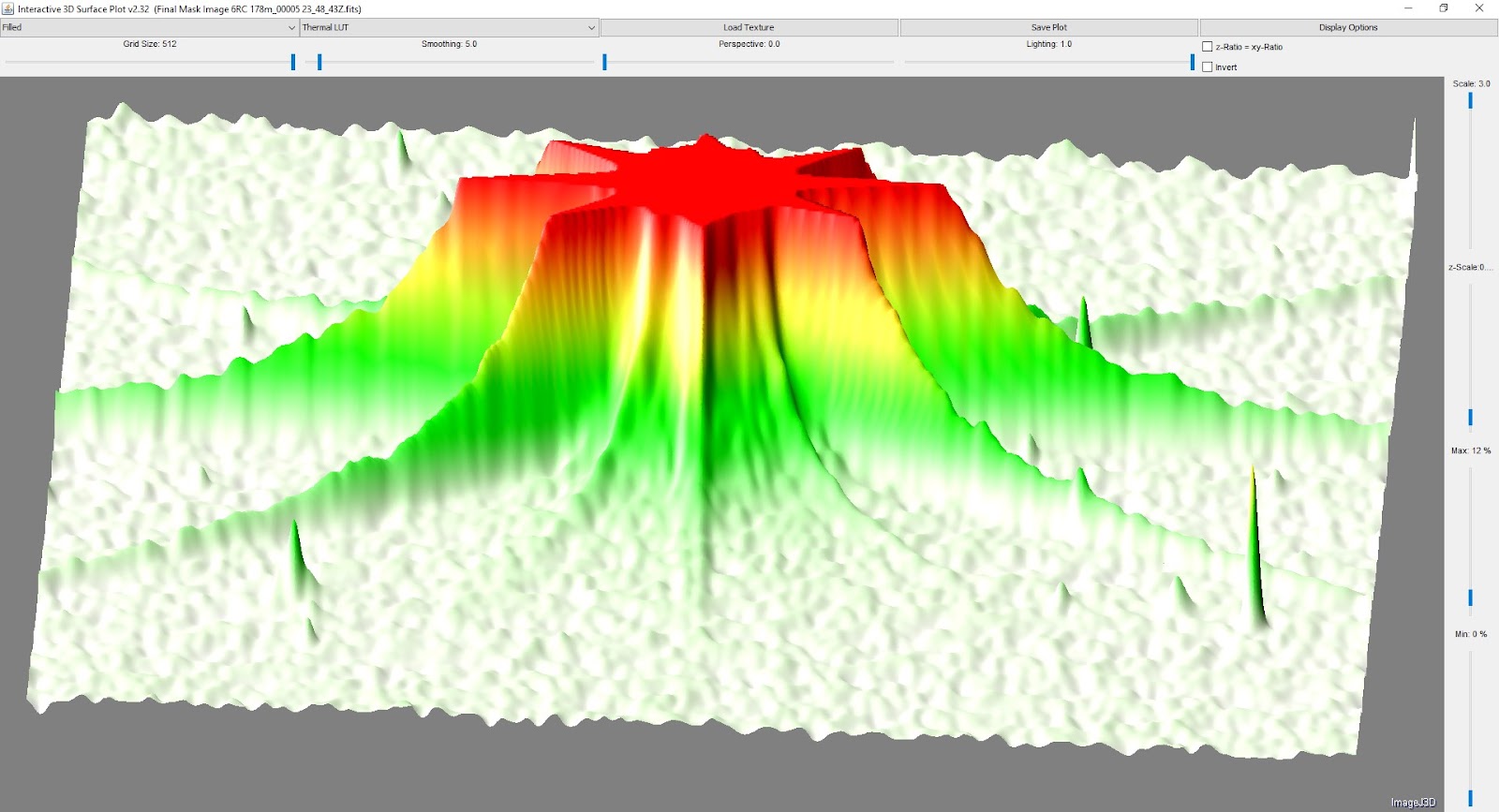 Apertura Focus Mask
Click to Enlarge Image
Apertura Focus Mask
Click to Enlarge Image
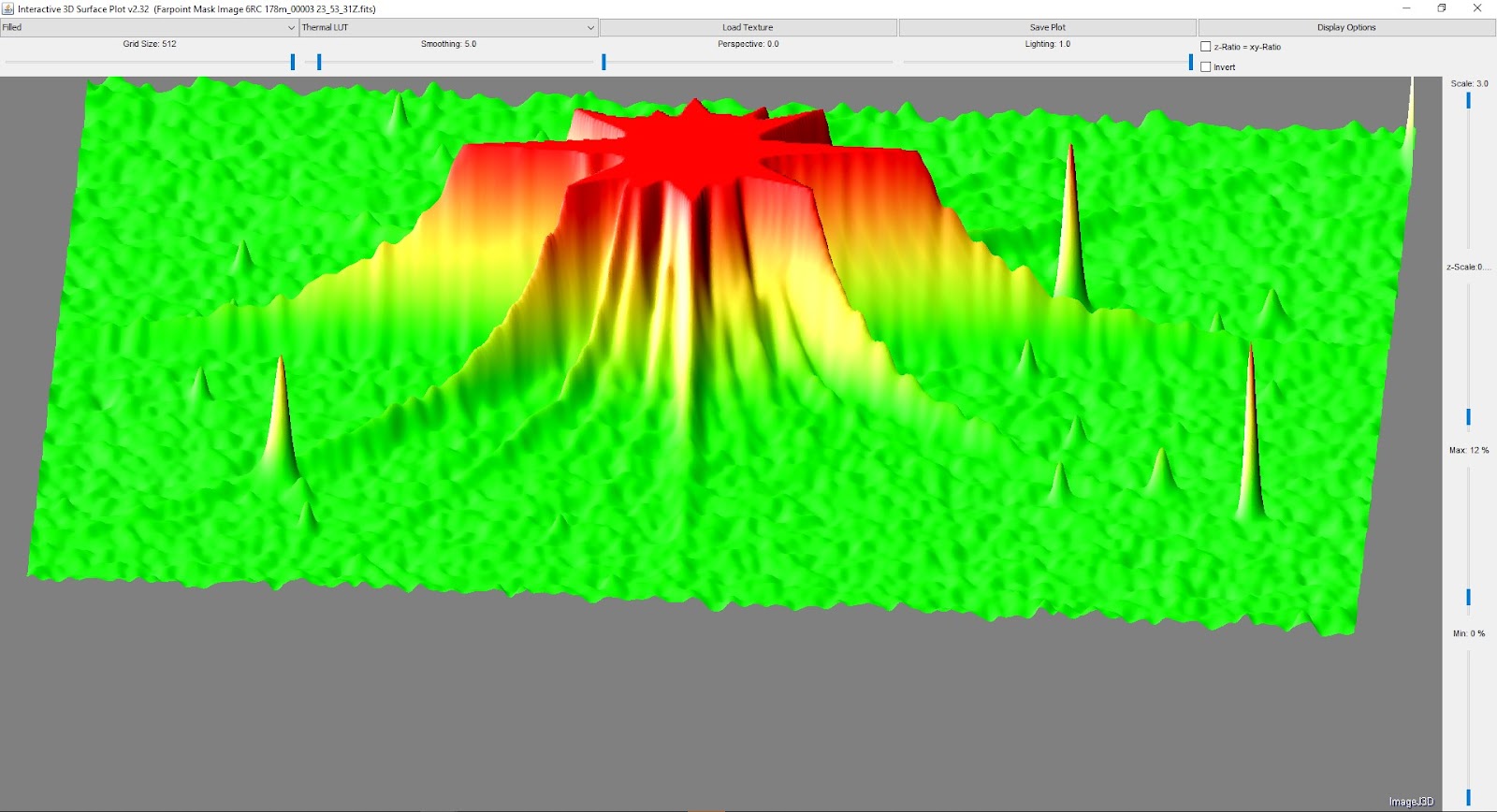 Competition Focus Mask
Click to Enlarge Image
Competition Focus Mask
Click to Enlarge Image
The above 3D intensity maps were generated from the following actual images, captured consecutively using the exact same settings and equipment. As you can see, both will allow the telescope to be focused, but one is much more clear and easy to see than the other. The X bars of the Apertura mask extend all the way to the edge of the frame, where the other brand’s X pattern falls off far from the edge of the frame.The Apertura X pattern is also much closer to the center horizontal focus bar and this makes it easier to judge a deviation from perfect focus. On the face of it, it seems like the wider spaced bars of the competition's mask could provide more "resolution", in practice the extra bloom towards the center where the spikes are bright, and light falloff towards the edge, prevents any possible gains from being realized. The left image, from the Apertura focus mask, also clearly shows the reduced secondary diffraction patterns. The image to the right of the other brand shows many different secondary X patterns.
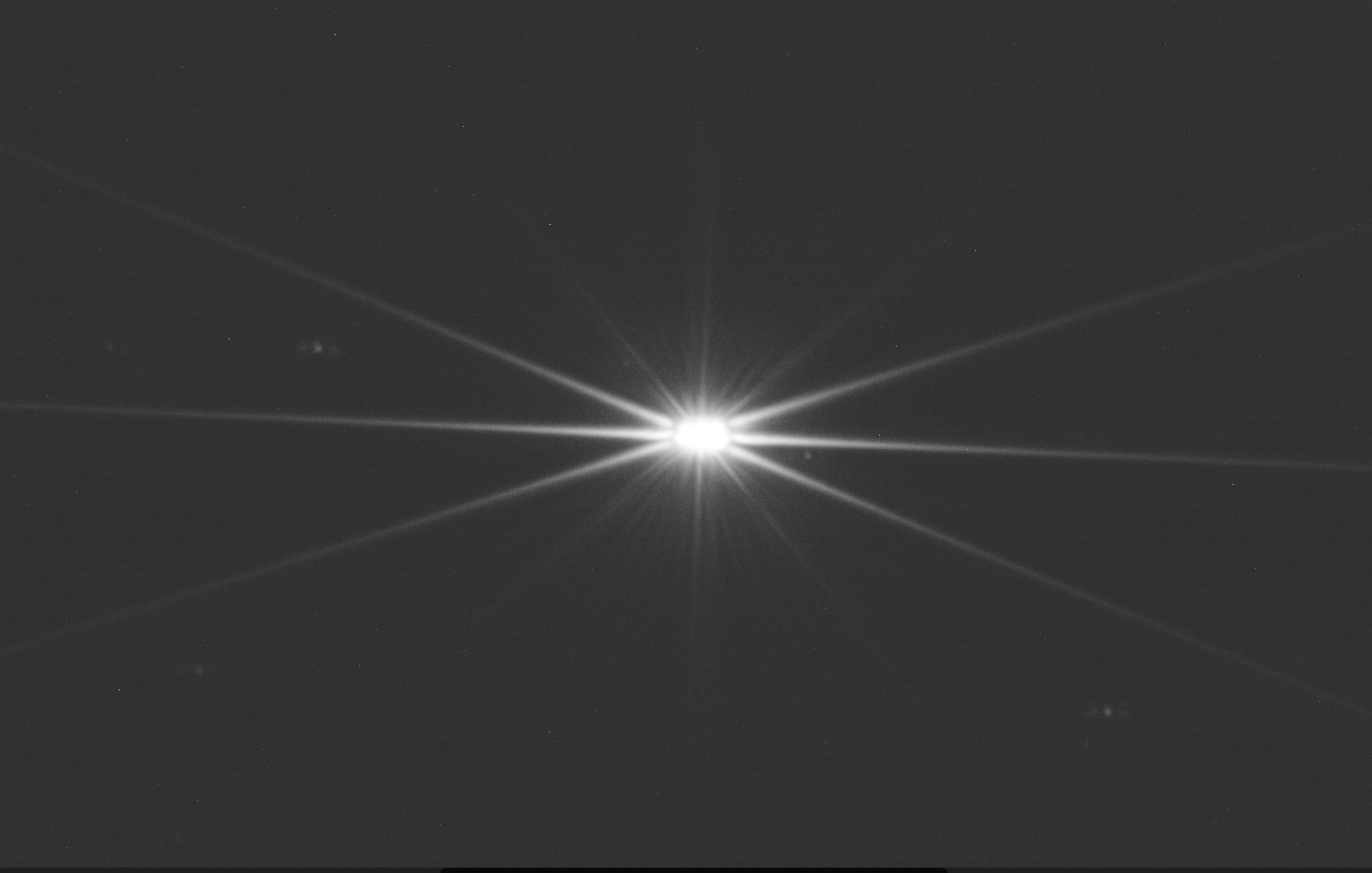 Apertura Focus Mask
Click to Enlarge Image
Apertura Focus Mask
Click to Enlarge Image
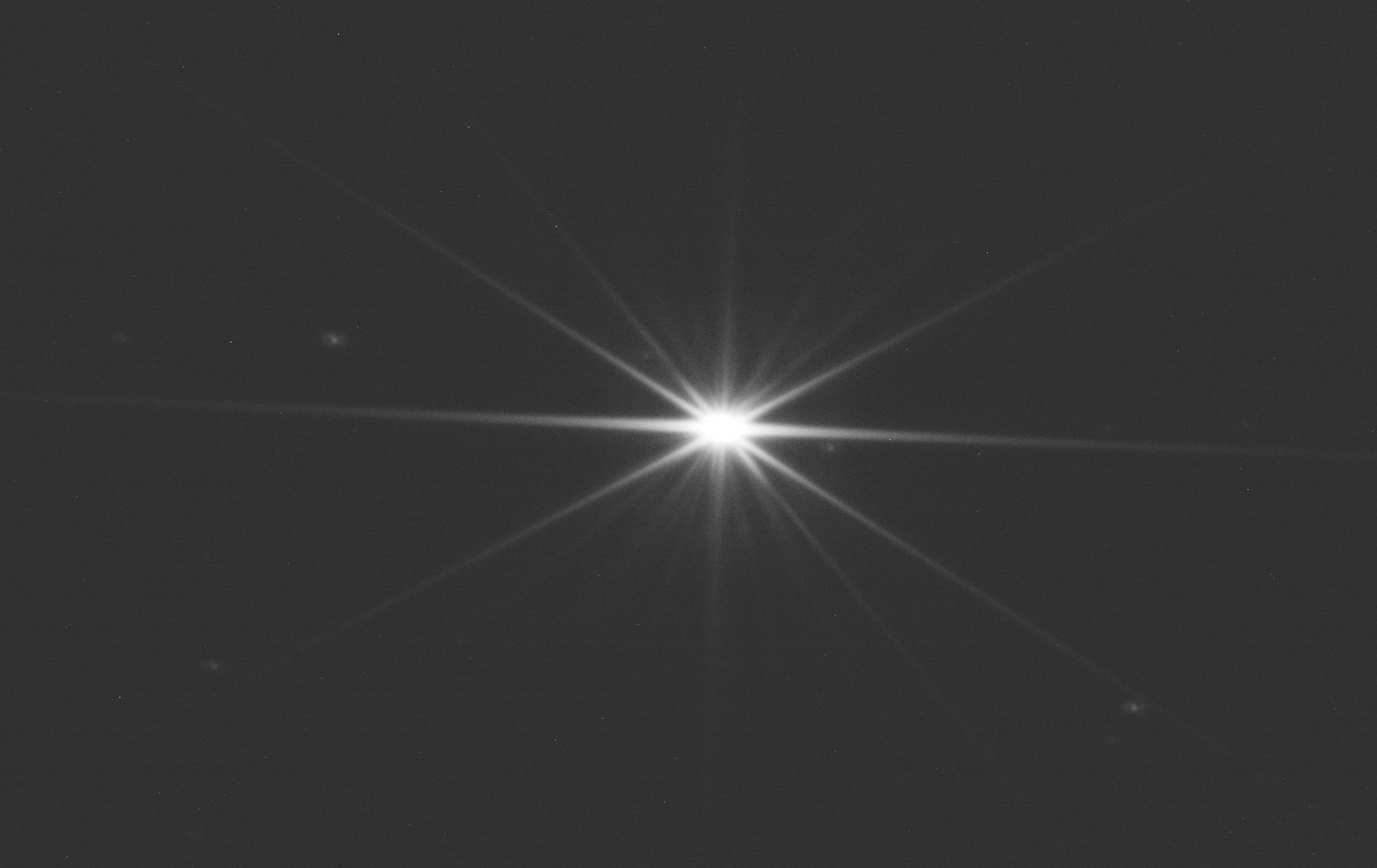 Competition Focus Mask
Click to Enlarge Image
Competition Focus Mask
Click to Enlarge Image
Step 3 - Material
With 2 of the 3 key components of the better focus mask equation solved, it was now time to focus on the last question: what should the mask be made out of?
Clearly plastic was the answer, or so they thought; the question more was ‘what kind of plastic?’. Focus masks aren’t subjected to high amounts of physical stress, so even at the largest size mask a slim plastic construction should not be an issue. It is also typically a good value, which as noted at the beginning is one of Apertura’s core values.
As the Apertura team assessed the plastic options however, plastic seemed less and less of a ‘shoo-in’. Masks sourced from acrylic had a tendency to crack, though they looked great. ABS, Kydex, and nylon promised to be more ductile/ durable, but came with their own sets of issues such as expensive production costs that would eliminate value proposition and/ or poor fit & finish of the final product. Additionally after working with some of the other plastic offerings on the market, the resistance to flexing (and therefore possible long term durability) from plastic seemed less certain.
Accordingly the team took a step back, and reassessed. Aluminum would, at thicknesses that were reasonable, provide the rigidity necessary throughout all mask sizes without question. It additionally could be made to a high level of fit & finish. Finally, while it did come in more expensive than acrylic, it came in at a better value proposition than expected. Prototypes were ordered, and once they were in hand the Apertura team knew they had arrived at the answer to their question of ‘How does one build a better focus mask?’.
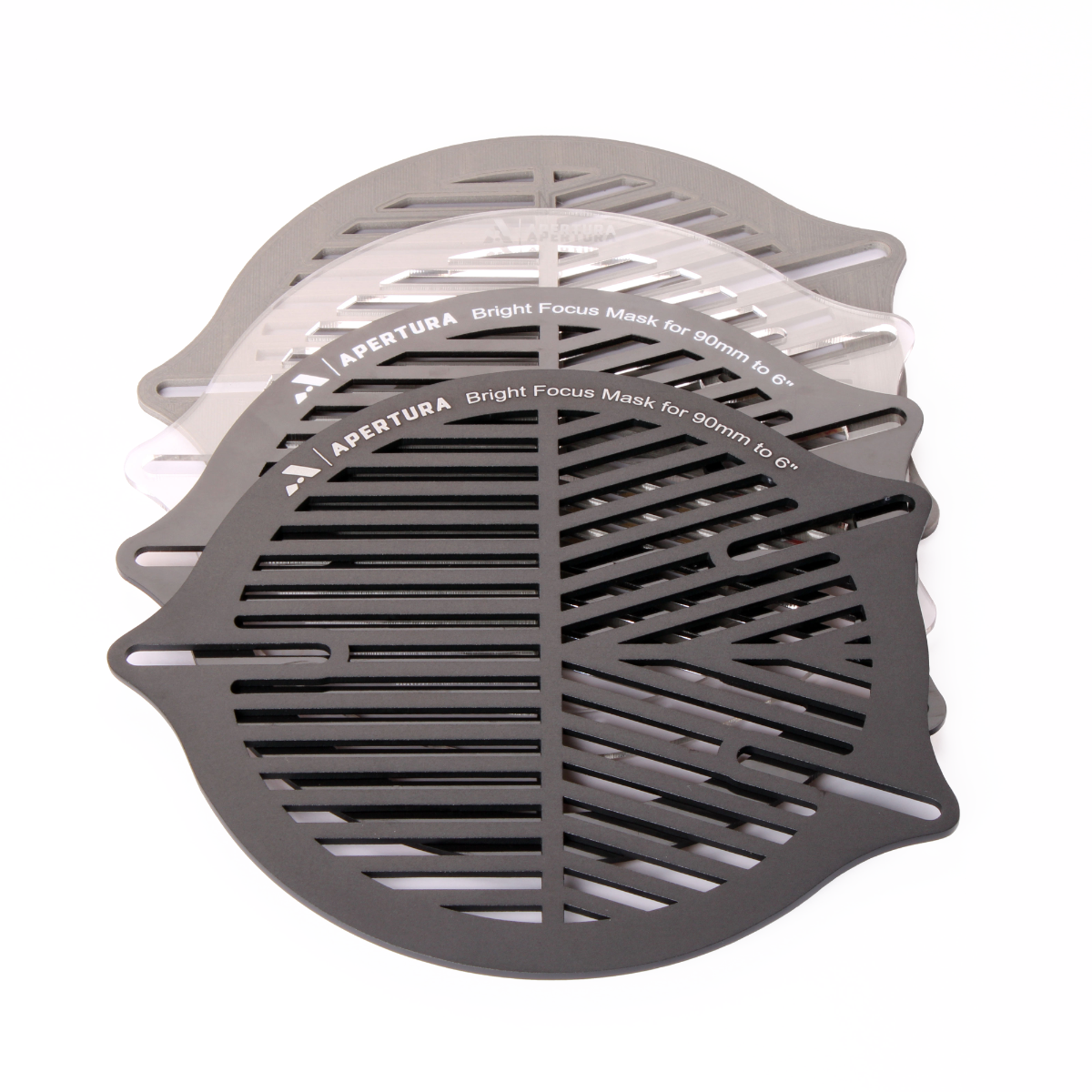 Testing Different Materials
Click to Enlarge Image
Testing Different Materials
Click to Enlarge Image
Step 4 - The Better Mask
The culmination of all of this is the Apertura Bright Focus Mask line that we’re proud to bring you today. These masks are made from durable aluminum, finished in a sleek black with the size range of the mask conveniently printed right on the front; the sizes currently available are 60mm-90mm, 90mm-150mm, 6”-9.25”, and 9.25”-12”. Included is all the hardware necessary to use the mask, along with - last but not least - the host of performance improvements detailed above. All at a value better than even other aluminum focus masks currently on the market!
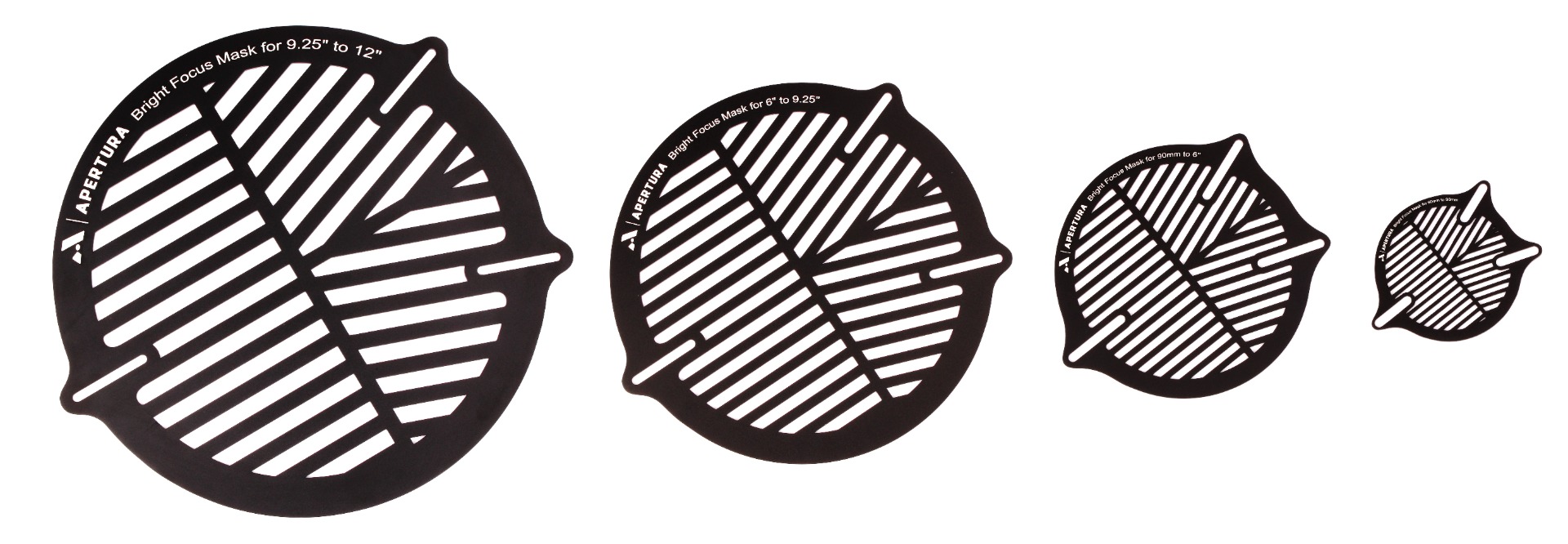 Apertura Bright Focus Masks
Click to Enlarge Image
Apertura Bright Focus Masks
Click to Enlarge Image

Learn More
Interested in learning more about astronomy and astrophotography? Not sure where to begin? Check out our Astronomy Hub!





